Occupational Safety Training for Plastering Machine Operation
99,000 ₫
Note: The price above is calculated per person and may fluctuate depending on the number of participants in the course and market conditions. For more accurate pricing support, please refer to the price list or contact our consulting staff directly.
Occupational safety is an important issue when operating a plastering machine and must be addressed promptly to ensure the health and safety of workers and enhance the reputation of businesses here. The Occupational Safety Training course is one of the effective solutions to raise awareness of how to prevent workplace accidents for workers operating a plastering machine.
Table of Contents
Toggle1. Overview of Trowel Machines
a. What is a Trowel Machine?
A trowel machine, also known as a “trowel machine,” is a device used in construction to smooth the surface of concrete or mortar after it has been poured and before it sets. Trowel machines help create a smooth, flat, and even surface, enhancing both the aesthetic and mechanical properties of the structure.
Trowel machines are commonly used in projects such as airports, train stations, parking lots, factories, and other industrial construction sites. Troweling is usually performed after the concrete has set to a certain hardness. The machine uses one or more rotating trowel blades to flatten and finish the concrete or mortar surface.
Trowel machines save time and effort compared to manual finishing. They ensure that the finished concrete or mortar surface meets the quality and smoothness standards required for the construction project.

b. Operating Principle of a Trowel Machine
The operating principle of a trowel machine is based on using trowel blades to smooth the surface of concrete or mortar. The basic steps are as follows:
- Surface preparation: Before using the trowel machine, the concrete or mortar surface must be prepared. This includes removing cracks, uneven areas, and other imperfections, ensuring sufficient hardness for processing, and applying a protective coating if necessary.
- Setting up the machine: Trowel machines are equipped with one or more rotating trowel blades, which can be adjusted in depth and angle. Before troweling, the operator sets the machine so that the blades contact the surface at the correct depth and angle.
- Starting the troweling: Once properly set up, the operator starts the machine. The rotating blades contact the concrete or mortar surface, smoothing it. Trowel machines are usually powered by strong motors to ensure efficient blade rotation.
- Surface smoothing: The machine moves over the surface in straight lines or a specific pattern. The blades remove high or low spots to create a flat, smooth surface. The blades operate by cutting and compressing the concrete to level it.
- Finishing: After troweling, the concrete or mortar surface reaches the desired flatness and smoothness. The operator can adjust the blades and machine for final smoothing and polishing if needed.

c. Industries Using Trowel Machines
Trowel machines are used in various industries, primarily in construction for leveling and finishing concrete or mortar surfaces. Key industries include:
- Construction: Trowel machines are used in buildings, high-rise structures, parking lots, bridges, and other projects to level and polish concrete surfaces after pouring.
- Industrial: Factories use trowel machines to flatten and finish concrete floors, walkways, and work areas.
- Infrastructure construction: Trowel machines are used to smooth surfaces of roads, airports, concrete-paved areas, and runways.
- Swimming pool construction: Ensures the pool floor is flat and safe.
- Repair and upgrading: Used to level and polish existing concrete surfaces for reuse or infrastructure upgrades.
- Professional construction: Often used for sports facilities like golf courses, tennis courts, and other specialized construction projects.
2. Overview of Safety Training for Operating Trowel Machines
a. What is Occupational Safety Training?
- Occupational safety training for operating trowel machines equips workers with awareness and knowledge to prevent workplace accidents. Workers directly operating trowel machines belong to Group 3.
- The training helps workers recognize and avoid hazards, reducing the risk of workplace accidents.
REGISTER FOR OCCUPATIONAL SAFETY TRAINING
b. Training Duration
Initial safety training duration:
- Total training time is at least 24 hours, including examination time.
- 8 hours of theory on safety and labor hygiene policies and regulations
- 8 hours of theory on basic occupational safety and hygiene knowledge
- 4 hours of theory on specialized training content
- 2 hours of practical training on specialized content
- 2 hours of final theoretical exam
Training sessions are usually divided into multiple classes depending on worker schedules, often over 3 days with 6 sessions, assuming continuous availability.
Periodic safety training:
- Before the occupational safety card expires, workers must undergo periodic safety training, with training time at least 50% of the initial training duration.
Explanation: The total time for periodic safety training is at least 12 hours, including examination. Upon completion and passing the test, workers will have their occupational safety card renewed.
c. Training Content
| No. | TRAINING CONTENT | TRAINING DURATION (HOURS) | |||
| Total | Including | ||||
| Theory | Practice | Examination | |||
| I | Policies and legal system on occupational safety and hygiene | 8 | 8 | 0 | 0 |
| 1 | Overview of legal documents and regulations on occupational safety and hygiene. | 6 | 6 | ||
| 2 | System of standards and technical regulations on occupational safety and hygiene. | 1 | 1 | ||
| 3 | Specific regulations from state management agencies on safety and hygiene when constructing, expanding, or renovating facilities, including machinery, equipment, and hazardous materials. | 1 | 1 | ||
| II | Basic knowledge of occupational safety and hygiene | 8 | 8 | 0 | 0 |
| 1 | Basic knowledge of hazards and harmful factors in the workplace. | 4 | 4 | ||
| 2 | Methods to improve working conditions. | 1 | 1 | ||
| 3 | Safety culture in production and business. | 1 | 1 | ||
| 4 | Rights and obligations of employers and workers; safety and hygiene policies; roles of safety officers. | 1 | 1 | ||
| 5 | Safety rules, signs, use of safety equipment and personal protective equipment; accident first aid and occupational disease prevention skills. | 1 | 1 | ||
| III | Specialized training content | 6 | 4 | 2 | 0 |
| Comprehensive knowledge of machinery, equipment, hazardous materials; risk assessment and management; safe work procedures with specialized equipment and hazardous materials. | 6 | 4 | 2 | ||
| IV | Final safety examination | 2 | 2 | 0 | 0 |
| Total | 24 | 22 | 2 | ||
See more training content for the 6 groups
d. Occupational Safety Card
Upon completing the safety training and passing the exam, workers are issued an occupational safety card (commonly called Group 3 safety certificate).
The Group 3 card displays personal information such as name, date of birth, job, work environment, training duration, official stamp, and signature confirming completion.
According to Clause 2 of Article 24 of Decree 44/2016/NĐ-CP, there are two cases:
- If the employer and worker have an employment contract, the employer must stamp and sign the card after the worker completes the Group 3 training and passes the exam.
- If the worker is freelance or temporary without an employment contract, the training unit must stamp and sign the card after the worker completes the training and passes the exam.

3. Hazards When Operating a Power Trowel
Operating a power trowel can involve several hazards and risks if safety rules are not followed and necessary vigilance is lacking. Here are some common hazards when operating a power trowel:
- Collision risk: The power trowel can collide with other objects, equipment, or infrastructure on the construction site. Operators need to stay alert to avoid collisions and check blind spots to ensure safety.
- Risk of falling: Operators may fall from the machine if it is not handled safely. This can happen when the machine moves too quickly or if the trowel slips or loses balance.
- Risk of contact with the trowel blades: The trowel blades rotate at high speeds and can cause serious injury if operators or other workers come into contact with them. Operators must follow safety rules and always maintain a safe distance from the blades.
- Toxins and dust: During operation, the power trowel can generate concrete dust and smoke from grinding and finishing the concrete surface. These substances can be harmful if inhaled or contacted directly. Operators should wear masks and use appropriate personal protective equipment (PPE) to protect their health.
- Fire hazard: Power trowels typically use fuel or oil to operate and may pose a fire risk if regular maintenance and inspections are neglected. Follow safety rules regarding fuel and heat exposure to prevent fire hazards.
To ensure safety when operating a power trowel, operators must receive proper training, follow safety regulations, and inspect the machine before use. It is also important to ensure that the trowel operates in a safe environment suitable for the specific construction site.

4. Measures to Prevent Workplace Accidents When Operating a Power Trowel
To prevent workplace accidents when operating a power trowel, a range of safety measures and compliance with specific rules is required. Here are some important measures:
- Training: Ensure all power trowel operators are fully trained on how to use the machine, safety rules, and pre-use inspection procedures. Training should be relevant to real-world construction site conditions.
- Pre-use inspection: Before starting the machine, operators should inspect the entire equipment to ensure it is functioning correctly and safely. This includes checking the blades, oil and fuel systems, controls, and any personal protective equipment.
- Control speed and operation: Operators should control the speed and operation of the machine safely, including limiting movement speed and ensuring stable and balanced operation.
- Work area inspection: Before starting, operators should check the work area for obstacles, slopes, or cracks that may cause hazards, and ensure the presence of other workers is taken into account.
- Use of personal protective equipment: Operators and workers in the area should wear full PPE, including safety glasses, masks, protective clothing, gloves, and safety shoes.
- Continuous monitoring: Monitor the power trowel and work process continuously to ensure all activities are safe, including tracking speed, depth, and overall safe operation.
- Regular maintenance: Perform regular maintenance to ensure proper operation and reduce fire or mechanical failure risks.
- Follow safety regulations: Comply with all industry-specific and internal company safety rules.
- Periodic inspection of the power trowel to detect safety issues such as wear, mechanical damage, or malfunctions, thereby reducing the risk of workplace accidents.
5. Benefits of Occupational Safety Training
An Toàn Nam Việt provides businesses with the following benefits after completing occupational safety training courses in compliance with Decree 44/2016/ND – CP on occupational health and safety:
- Workers can recognize potential hazards in the workplace and take preventive measures to avoid accidents.
- Businesses can establish risk prevention measures in production, operation, and maintenance processes.
- Minimizes costs associated with workplace safety incidents.
- Continuous production ensures higher labor productivity and product quality.
- Ensures compliance with labor safety laws and reduces legal risks.
- Enhances company credibility and professionalism, improving brand value.
Nam Việt’s training courses provide a preventive approach to external risks, helping individuals avoid hazards that could result in injury or even death.
REGISTER FOR OCCUPATIONAL SAFETY TRAINING
6. Customer Feedback After Completing the Training
An Toàn Nam Việt has many years of experience collaborating with businesses across Vietnam, especially in the southern provinces. This responsibility is extremely valuable, which is why Nam Việt’s occupational safety training is increasingly professional. The company’s growth is driven by positive feedback and suggestions from partners. Here are some testimonials from clients we have served:
See more customer interviews after using our services at An Toàn Nam Việt
7. An Toàn Nam Việt’s Occupational Safety Training Capability
An Toàn Nam Việt is a reputable and quality occupational safety training center in Vietnam, delivering continuous training sessions at factories, production facilities, and construction sites nationwide (all 63 provinces).
REGISTER FOR OCCUPATIONAL SAFETY TRAINING
Occupational Safety Training License
- An Toàn Nam Việt has been inspected and certified by the Department of Safety, Ministry of Labor, Invalids and Social Affairs as qualified to provide occupational safety training, further strengthening our training capabilities.

Training Materials and Lectures
- Training materials for occupational safety are reviewed before being used in courses to ensure accurate knowledge and practical effectiveness.
- Teaching methods follow Nam Viet standards, based on expert research in occupational safety training, to maximize knowledge retention for trainees.
Facilities
- Controlling classroom factors enhances training efficiency and knowledge absorption.
- Our training facilities offer spacious classrooms with adequate lighting and training equipment.
8. Nationwide Reputable Safety Training Center
At An Toàn Nam Việt, occupational safety training is our top priority. We focus on teaching workers self-protection skills, equipping them with knowledge for a safe working life, contributing to national development.
We carefully prepare every detail—from tools, teaching equipment, curriculum, materials, sound, and lighting—to ensure effective training.
Our instructors are experienced experts with research on hazard identification across industries and prevention measures. Lectures are practical, engaging, and easy to understand, aligned with Decree 44/2016/ND-CP.
This allows workers to learn prevention measures and self-protection strategies, applying them effectively on the job.
Our training center prides itself on professional and reliable occupational safety training with the following advantages:
- Competitive training costs without compromising quality.
- Flexible scheduling to match company operations.
- Fast and compliant certification process.
- Experienced instructors.
- Classrooms controlled for optimal learning conditions.
- Courses tailored to workplace safety needs.
- Dedicated and professional support for clients.

9. Additional Occupational Safety Training Materials
- Occupational Safety Training Materials
- Safety materials for operating a power trowel
- Occupational safety training test sets
- Occupational safety quiz for power trowel operation
- Power trowel operation safety training slides
1 review for Occupational Safety Training for Plastering Machine Operation
No comments yet

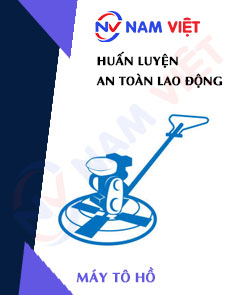
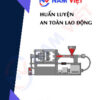
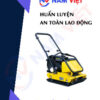




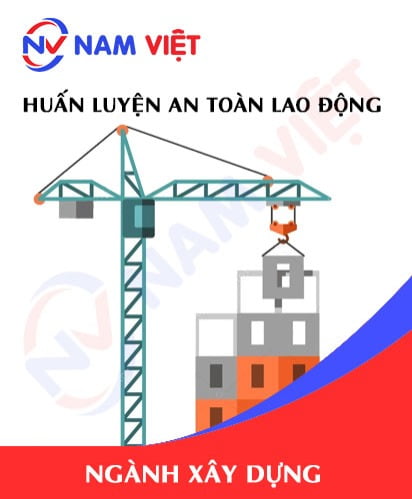

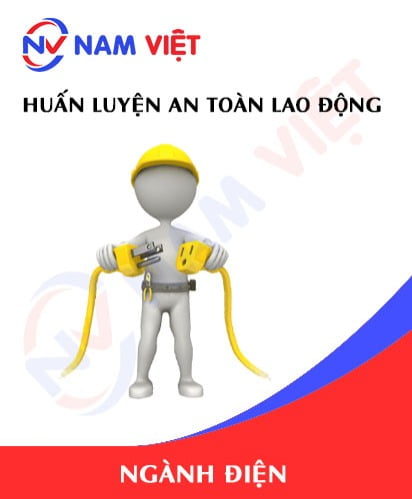
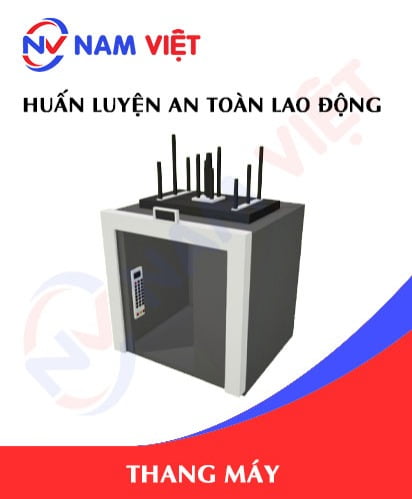

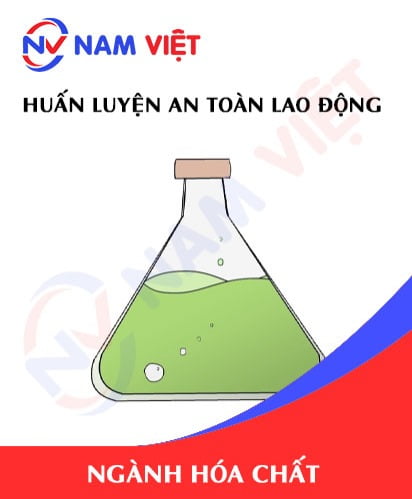

phanminhhang341
Good labor safety unit